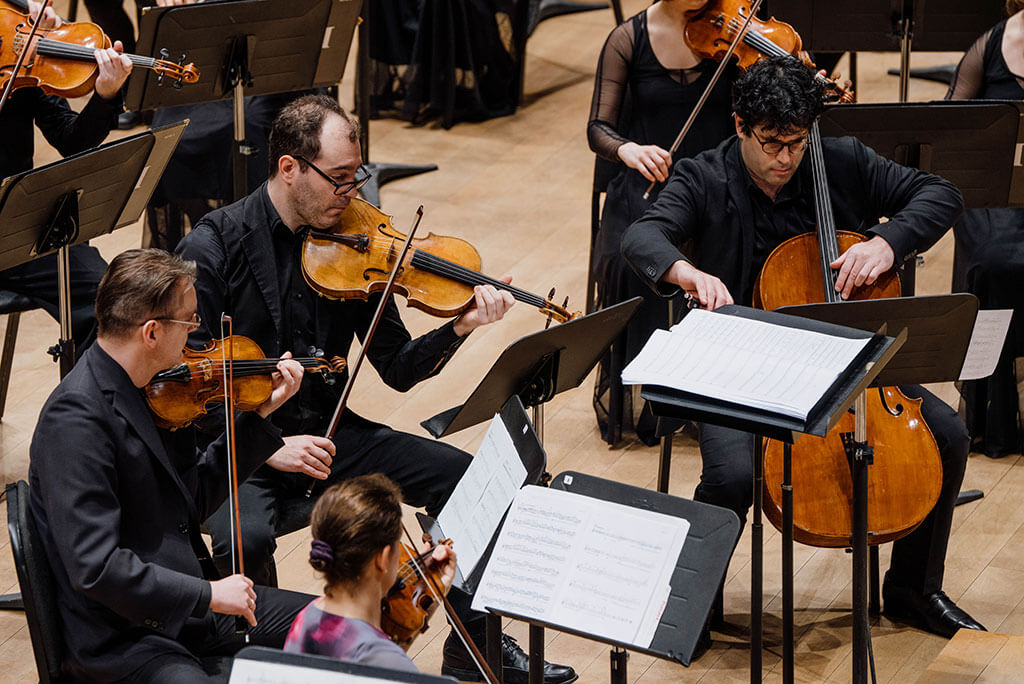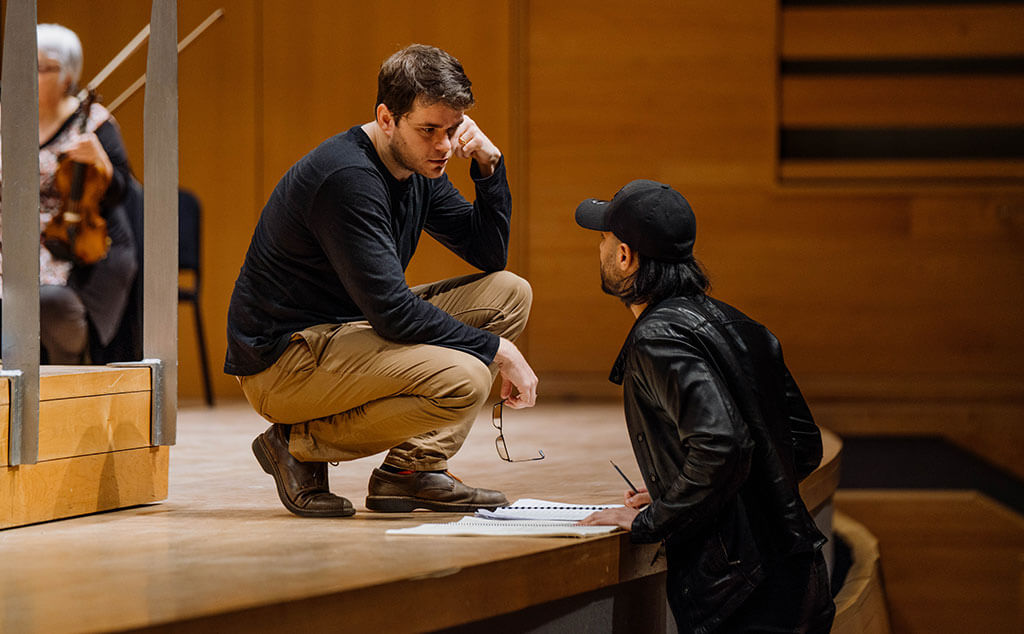
The repertoire for string quartet and orchestra is larger than one might suppose, even if Elgar’s Introduction and Allegro is the only such work we hear with any regularity. Now Samy Moussa has made a valuable contribution, called simply Concerto pour quatuor à cordes et orchestre, which had its world premiere Friday night under auspices of the Orchestre Métropolitain.
That was not a typo. A Montrealer by birth who lives in Europe, Moussa is known to be a favourite of the music director of another orchestra in town, which shall go nameless, but its initials are OSM. Somehow this allegiance (which less than a year ago produced the Symphonie montréalaise) proved no obstacle to a joint commission by the OM and the Quatuor Molinari with the help of the Munich-based Ernst von Siemens Music Foundation.
Back to the music, which is as firmly tonal as anything from the pen of Honegger, Ibert or Mercure, at least most of the time, and has traces of the minimalist aesthetic, notably in the repetition of a rapid four-note motif. Yet I hesitate to use the “M” word in connection with Moussa because his vocabulary is too wide for such a limited designation and his inherent sense of drama is more allied to pre-minimalist models.
At the beginning we had open tones from the orchestra with punctuation by the Molinaris, who were assembled in a crescent in front of the guest conductor, Nicholas Carter. This was music of the dawn. Off-kilter metre kept the busy second movement alive. Led by first violin Olga Ranzenhofer, the quartet had a cadenza of sorts before the finale, where the tonal language disintegrated in some artful ways and the soloists (who elsewhere mostly spoke with one voice) combined pizzicato and arco playing.
A “sunset” conclusion seemed imminent, but then the music accelerated and got louder. Was Moussa’s “pow” conclusion appropriate? This was a subject of expert debate during intermission, but the listeners in the Maison symphonique (including a substantial cohort of students) found it entirely to their liking. Anyway, there could be no controversy over the expertise of Moussa’s writing for a mid-size classical orchestra that never overwhelmed the quartet. As for the foursome, they were sometimes prickly, sometimes soaring, but always assured and audible. The length of 22 minutes seemed about right. Good piece.

A slim Australian in his early 30s with an open collar and a changeable podium style, Carter led this smoothly, with no baton. He was armed with a stick for L’Étoile noire: Tombeau de Borduas, by the late François Morel. This seven-minute piece of 1962, inspired by a 1957 abstract canvas by Paul-Émile Borduas, spoke a tough 12-tone dialect, but with remarkable integrity. The performance was clear and committed. Carter seemed to get it all. There was a notable flute solo.
Solos are so abundant in the Ravel orchestration of Mussorgsky’s Pictures at an Exhibition that to name individuals would create a phone book. The saxophone in The Old Castle was as mellow as could be. While ensemble was not perfect in the early going, the monumental chords of Catacombs made me wonder where one could find a better brass section. Strings were full-bodied (and the trumpet appropriately penetrating) in Samuel Goldenberg and Schmuyle, even if the tempo was too slow. As much a collaborator as a leader, Carter nonetheless oversaw an exciting Baba Yaga and a triumphant Great Gate of Kiev.
This conductor, who commutes between the Adelaide Symphony Orchestra and the opera house of Klagenfurt in Austria, kept a close eye on his scores throughout the evening, sometimes wearing glasses. Score-reading is an underrated art, but his head seemed pretty much buried in Britten’s Four Sea Interludes, which I suspect got short shrift in rehearsal.
After introducing himself in perfectly adequate French, Carter briefed the audience about the works in English. Mario Paquet was on hand to translate. The OM is rightly committed to audience communication, but the back-and-forth was a little tedious. The Azrieli Foundation was a sponsor of the concert, and the RBC Emerging Artists Project also got a credit.
ALSO READ:
- SCRUTINY | Azrieli gala a popular success - 22 octobre 2022
- COMMENTARY | Why Playing Political Hot Potato With Artists Is A Terrible Idea - 23 mars 2022
- REVIEW |Tenor Spyres flies high at Lanaudière despite the downpour - 14 juillet 2019



